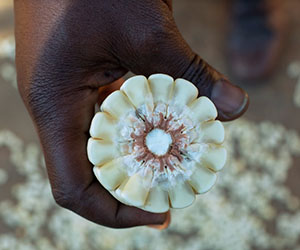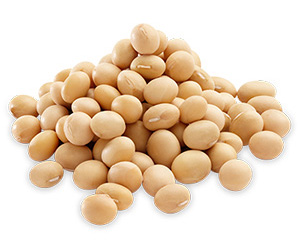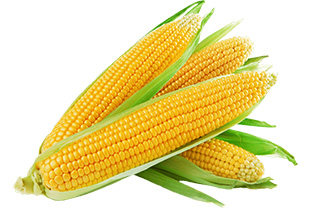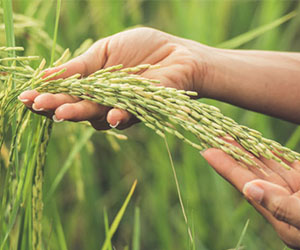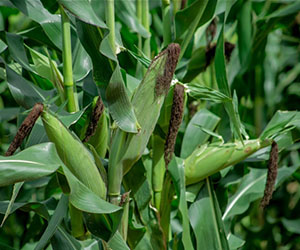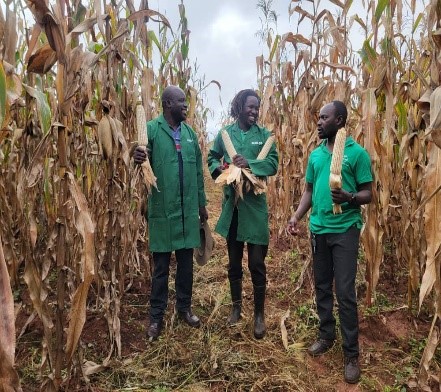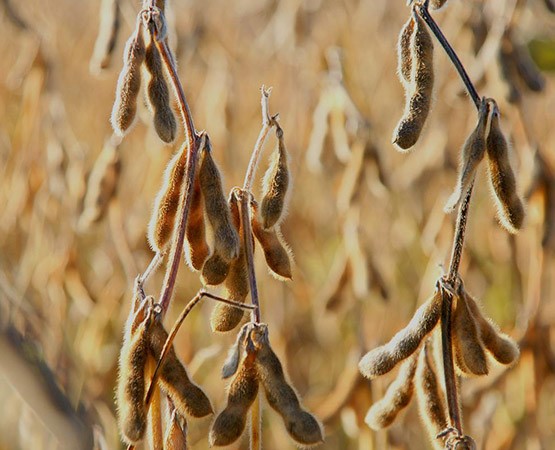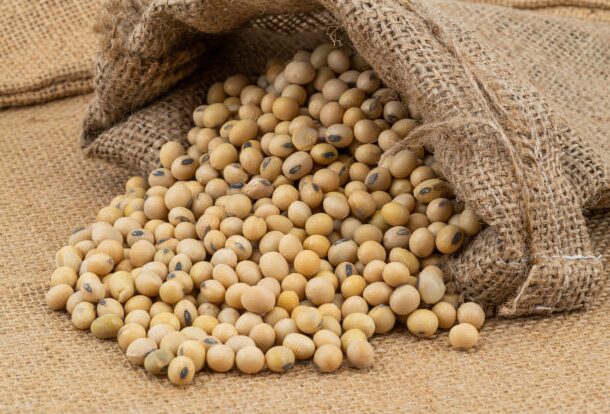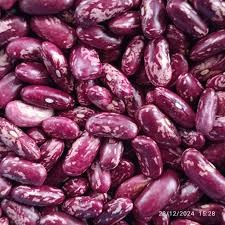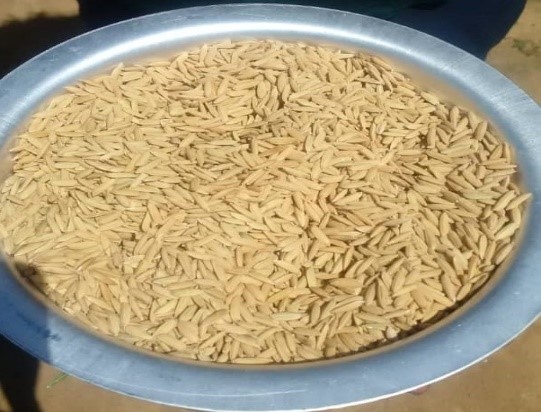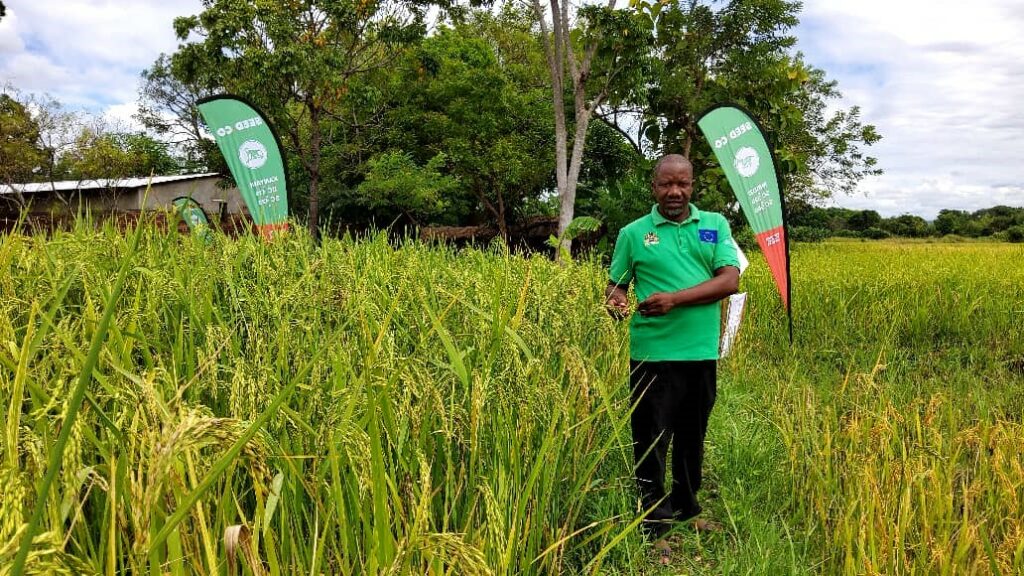For: Maize, Soybeans, Beans, and Rice
Includes: Harvesting, Drying, Cleaning, and Chemical Storage Treatments
Article By: James Mtiesa Malawi National Agronomist Manager
At SeedCo Malawi Limited, we’re committed to empowering farmers with high-quality, certified seeds for a variety of crops, including maize, soybeans, sugar beans, rice, and vegetables. With a range of top-performing varieties like Kalulu, Kanyani, and Serenade, we’re dedicated to helping you achieve a bountiful harvest.
But getting the seeds right is just the beginning. Proper harvesting and post-harvest handling are crucial to minimizing losses and maintaining grain quality. In this article, we’ll explore the importance of timely harvesting, proper drying, storage, and processing, and share expert tips to help you get the most out of your harvest. Whether you’re a seasoned farmer or just starting out, join us as we dive into the world of high-quality seeds and best practices for a successful harvest.
MAIZE (Corn)
Harvesting Time: When husks dry and kernels are hard (20–25% moisture).
Method: Manual or combine harvester.
Post-Harvest Treatment
- Drying: Sun-drying or mechanical to 11–13% moisture.
- Shelling: By hand or mechanical shellers.
- Cleaning: Remove dust, debris, broken kernels.
- Storage:
o Chemical treatment: use only recommended chemicals from legit suppliers or contact Seed Co agronomists for instructions
o Apply insecticides only on dry, clean maize and follow recommended doses.
o Rotate chemicals to prevent pest resistance.
🔍 Scientific Insight: Studies show that delayed harvesting can cause yield losses of 5–15%, and if not dried properly, storage losses can exceed 30% due to insect and fungal attacks.
SOYBEANS
Soya Beans: A Delicate Balance
Harvesting
- Time: Pods dry, leaves dropped, moisture 13–15%.
- Method: Manual or mechanical.
- Harvest early morning or late afternoon to reduce shattering
- Avoid rough handling during threshing to prevent cracks
- Post-Harvest Treatment:
- Drying: To 10–12% moisture.
- Cleaning: Remove foreign matter.
- Storage:
o Chemical treatment: use only recommended chemicals from legit suppliers or contact Seed Co agronomists for instructions
o Apply insecticides only on dry, clean soybean and follow recommended doses.
o Rotate chemicals to prevent pest resistance.
o Avoid over-handling as soybeans are easily cracked.
🔍 Scientific Insight: Shattering losses can reach 20% or more if soya is not harvested within the optimal 3–5 day window post-maturity. Additionally, handling damage can lower germination rates by up to 25%.
BEANS (Dry Beans)
Harvesting:
- Time: Pods are dry and rattle; moisture around 18%.
- Method: Manual or mechanical.
Post-Harvest Treatment:
- Drying: To 12–13% moisture.
- Threshing & Cleaning: Use bean shellers, winnowing.
- Sorting: By color, size, and quality.
- Storage:
o Chemical treatment: use only recommended chemicals from legit suppliers or contact Seed Co agronomists for instructions
o Apply insecticides only on dry, clean beans and follow recommended doses.
o Rotate chemicals to prevent pest resistance.
o Store in cool, dry areas in airtight or treated bags.
🔍 Scientific Insight: Field losses can exceed 10–15% due to shattering, pest attacks, or adverse weather if harvest is delayed. Poor threshing practices can damage up to 30% of the grains, rendering them unmarketable.
RICE
Harvesting:
- Time: 80–85% grains mature; golden yellow.
- Method: Manual or combine harvester.
Post-Harvest Treatment:
- Threshing: Remove grains from panicles.
- Drying: To 12–14% moisture.
- Cleaning: Remove foreign material.
- Milling: Dehulling (brown rice); polishing (white rice).
- Storage:
o Chemical treatment: use only recommended chemicals from legit suppliers or contact Seed Co agronomists for instructions
o Apply insecticides only on dry, clean rice and follow recommended doses.
o Rotate chemicals to prevent pest resistance.
o Avoid treating edible white rice directly with strong chemicals.
🔍 Scientific Insight: Improper harvesting and post-harvest management in rice can cause combined losses of up to 37%—including shattering (5–10%), threshing losses (3–5%), and drying/spoilage losses (15–20%).
⚠️ SAFETY NOTES FOR CHEMICAL TREATMENT:
- Always follow manufacturer guidelines and dosage.
- Only treat dry, clean grains.
- Do not eat or cook chemically treated grains without removing residues where applicable.
- Use PPE (Personal Protective Equipment) during fumigation or chemical dusting.
- Mark chemically treated bags clearly: “TREATED – NOT FOR DIRECT CONSUMPTION”.
 Malawi
Malawi Seed Co Group
Seed Co Group Botswana
Botswana Kenya
Kenya Nigeria
Nigeria South Africa
South Africa West & Central Africa
West & Central Africa Tanzania
Tanzania Zambia
Zambia Zimbabwe
Zimbabwe
